What'sNEW Oct - Dec 2024
| 27 Dec 2024 |
What'sNEW about HGT


|
This shows that horizontal gene transfer is an underappreciated way that rapid evolution happens in animals....
 Acquiring specific, heritable immunity from viral genes is a known phenomenon, but now a team of biologists at UC Berkeley have demonstated the process by transferring an immunity-conferring phage gene into fruitflies.
Acquiring specific, heritable immunity from viral genes is a known phenomenon, but now a team of biologists at UC Berkeley have demonstated the process by transferring an immunity-conferring phage gene into fruitflies.
 "Fly vs. wasp: Stealing a defense move helps thwart a predator," by Robert Sanders, UC Berkeley News, 23 Dec 2024. "Fly vs. wasp: Stealing a defense move helps thwart a predator," by Robert Sanders, UC Berkeley News, 23 Dec 2024.
 Tarnopol et al., doi:10.1016/j.cub.2024.11.071 [pdf], Current Biology, 03 Feb 2025. Tarnopol et al., doi:10.1016/j.cub.2024.11.071 [pdf], Current Biology, 03 Feb 2025.
 Viruses... has lots about HGT to and among eukaryotes. Viruses... has lots about HGT to and among eukaryotes.
| 19 Dec 2024 |
What'sNEW about HGT


|
Bacterial genes enabled brown algae to become multicellular. Also, brown algae genomes contain many viral insertions, and the species frequently swap genes. These facts surprise neo-darwinism and support cosmic ancestry.
 "Evolutionary genomics of the emergence of brown algae as key components of coastal ecosystems," by Jean-Marc Aury et al, Cell, 27 Nov 2024; and commentary from Sungkyunkwan University via Phys.Org, 18 Dec 2024. "Evolutionary genomics of the emergence of brown algae as key components of coastal ecosystems," by Jean-Marc Aury et al, Cell, 27 Nov 2024; and commentary from Sungkyunkwan University via Phys.Org, 18 Dec 2024.
 Viruses... has lots about HGT to and among eukaryotes. Viruses... has lots about HGT to and among eukaryotes.
Dark comets are small bodies with no detected coma that have significant nongravitational accelerations explainable by outgassing of volatiles....
The team announcing this sees two categories of dark comets, outer and inner. The former may be nearly-spent ordinary comets, but the inner ones may be members of a new class of objects. The researchers add that comets deliver water, and likely other ingredients necessary for life to Earth. But could cometary outgassing actually come from bacterial metabolism, enhanced near the sun? Could the organics in comets be "postbiotic"? Could comets deliver life itself?
 "Two distinct populations of dark comets delineated by orbits and sizes," by Darryl Z. Seligman, Davide Farnocchia et al, PNAS [abstract], 09 Dec 2024. "Two distinct populations of dark comets delineated by orbits and sizes," by Darryl Z. Seligman, Davide Farnocchia et al, PNAS [abstract], 09 Dec 2024.
 Thanks, for the full article, corresponding author Darryl Seligman. Thanks, for the full article, corresponding author Darryl Seligman.
 27 Mar 2023: outgassing by a large interstellar object. 27 Mar 2023: outgassing by a large interstellar object.
 Comets: The Delivery System has background and many updates. Comets: The Delivery System has background and many updates.
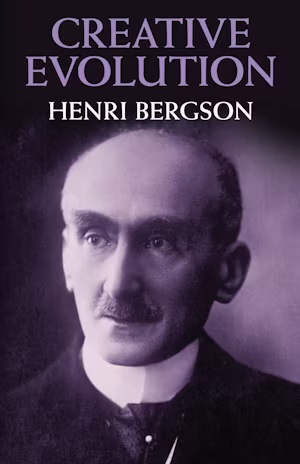 Yesterday I reviewed a new biography of Henri Bergson. Now I am reading Creative Evolution, his most famous work, published in 1907. I should have known that he, a dstinguished and honored philosopher, would be entirely up-to-date on the subject of Evolution. (The book took him years to research but only a few months to write, Herring's biography says.) Bergson accepts the long history of life's progress, but makes a methodical case against the neo-Darwinian (and neo-Lamarckian) accounts for the processes that produce it. For example, he notices that "adaptation" is used in two different ways, leading to error. He especially scrutinizes convergent evolution and the evolution of the eye. His arguments are penetrating and still seem valid to me.
Yesterday I reviewed a new biography of Henri Bergson. Now I am reading Creative Evolution, his most famous work, published in 1907. I should have known that he, a dstinguished and honored philosopher, would be entirely up-to-date on the subject of Evolution. (The book took him years to research but only a few months to write, Herring's biography says.) Bergson accepts the long history of life's progress, but makes a methodical case against the neo-Darwinian (and neo-Lamarckian) accounts for the processes that produce it. For example, he notices that "adaptation" is used in two different ways, leading to error. He especially scrutinizes convergent evolution and the evolution of the eye. His arguments are penetrating and still seem valid to me.
Bergson juxtaposes intelligence, instinct, intuition and invention; this discussion is intriguing and enjoyable. Ultimately, he wants to connect life's evolution and human consciousness, both motivated by the same élan vital — a fluid concept, he would admit. As paraphrased by philosopher Mathilde Tahar, élan vital "points to a reality that is more than matter, but only exists through matter." Bergson writes, "...It does not follow that chemistry and physics will ever give us the key to life."
In his time, science was considered infallible and inevitable. But science is always incomplete, because there is always more to know. And science can be led astray by hubris and unexamined assumptions. These problems crippled the theory of evolution. (They still do.) Thus disadvantaged, Bergson's best ideas are intuitive. He doubts that life follows a prescribed plan, but if it does, "complete execution of it may be put off to a distant future or even indefinitely." I like to think that élan vital is the plan —the programming carried in genetic molecules and expressed by life— of which only a fraction has been executed on Earth. With a material basis in physics and genetically programmed chemstry, this understanding restores the enchantment of life. If we could reincarnate Bergson with today's knowledge, he might approve.
 Creative Evolution, by Henri Bergson, 1907, trans. by Arthur Mitchell, Project Gutenberg EBook released 01 Aug 2008 (pictured: cover of Henry Holt and Company reprint of the 1911 edition.) Creative Evolution, by Henri Bergson, 1907, trans. by Arthur Mitchell, Project Gutenberg EBook released 01 Aug 2008 (pictured: cover of Henry Holt and Company reprint of the 1911 edition.)
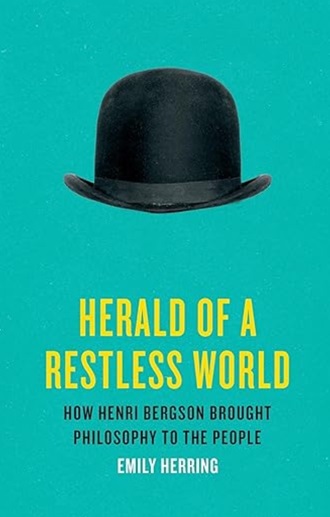 I have long known of the French the philosopher Henri Bergson (1859-1941). I vaguely understood that his philosophy was a reaction to the strict materialism of science and the nihilism that came with the theory of evolution. I knew that Bergson's influence, while very strong in his day, was not lasting. But I thought that his famous principle, élan vital, might point to hidden truth – something special about life.
I have long known of the French the philosopher Henri Bergson (1859-1941). I vaguely understood that his philosophy was a reaction to the strict materialism of science and the nihilism that came with the theory of evolution. I knew that Bergson's influence, while very strong in his day, was not lasting. But I thought that his famous principle, élan vital, might point to hidden truth – something special about life.
Now a new biography is published, Herald of a Restless World, by Emily Herring. His life story is vividly told, although the book is "not an introduction to his philosophy," Herring notes. Still, I learned plenty. Bergson's early preoccupation was a concept of time that he named durée. Later, he disagreed with Einstein about a way to reconcile their understandings of time. A pacifist by nature, Bergson helped to convince Woodrow Wilson to declare war on Germany in 2017. He was a mesmerizing lecturer, with a huge following in his heyday. The biography is well-researched and -written, and quite informative about philosophy and culture at a time very different from today.
In 1907, Bergson published Creative Evolution. At that time, evolution was still taught as history. The idea that life needed very complex instructions, too small to see, was only suspected. DNA was unknown. No, Bergson's élan vital was an immaterial force driving evolution, but also explaining heroism, social or technological progress, and even astronomical processes. Meanwhile, the theory of evolution required its advocates to explain things like laughter and music in terms of their survival value. Bergson was not exempt.
 Herald of a Restless World: How Henri Bergson Brought Philosophy to the People, by Emily Herring, Basic Books, 22 Oct 2024. Herald of a Restless World: How Henri Bergson Brought Philosophy to the People, by Emily Herring, Basic Books, 22 Oct 2024.
The association of organic-rich materials with complex and multiple large-impact events supports an endogenous origin for the organics on Ceres. This is the conclusion of an international team after studying images from the Dawn mission that ended six years ago. Ceres, the largest asteroid, is a possible source of carbonaceous meteorites that reach Earth. Now it appears that its surface organics have been excavated from within. Notably, the existence of brines and salty water places Ceres among the candidate ocean worlds with astrobiological implications.
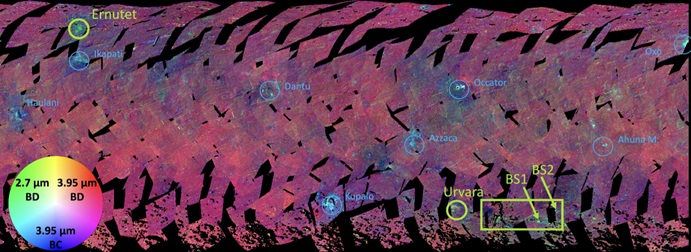
 "New Candidates for Organic-rich Regions on Ceres," by J. L. Rizos et al, doi:10.3847/PSJ/ad86ba, Planet. Sci. J., 02 Dec 2024; and commentary: "New Candidates for Organic-rich Regions on Ceres," by J. L. Rizos et al, doi:10.3847/PSJ/ad86ba, Planet. Sci. J., 02 Dec 2024; and commentary:
 "New evidence of organic material identified on Ceres, the inner solar system's most water-rich object after Earth," Instituto de Astrof sica de Andaluc a via Phys.Org, 04 Dec 2024; and background: "New evidence of organic material identified on Ceres, the inner solar system's most water-rich object after Earth," Instituto de Astrof sica de Andaluc a via Phys.Org, 04 Dec 2024; and background:
 "The Dwarf Planet on Our Doorstep," by Sean Raymond Nautilus, 21 Mar 2023. "The Dwarf Planet on Our Doorstep," by Sean Raymond Nautilus, 21 Mar 2023.
 14 Aug 2020 14 Aug 2020
 15 Mar 2018 and 15 Mar 2018 and
 17 Feb 2017: more about Ceres. 17 Feb 2017: more about Ceres.
 Life on Europa, Other Moons, Other Planets?... has related links.. Life on Europa, Other Moons, Other Planets?... has related links..
Aleksandr Oparin's heterotrophic theory of the origin of life turns 100 this year. His small book, The Origin of Life was published in 1924, before genes were accepted as real. Veteran origin-of-life researcher Antonio Lazcano reviews the subject and Oparin's lifelong contribution to it it.
 "On the origins of organisms," by Antonio Lazcano, Science, 06 Dec 2024. "On the origins of organisms," by Antonio Lazcano, Science, 06 Dec 2024.
 The RNA World and Other Origin-of-Life Theories has history and updates. The RNA World and Other Origin-of-Life Theories has history and updates.
| 08 Dec 2024 |
What'sNEW about HGT


|
A "Starship" transposon can transfer tens to hundreds of genes between species of fungi. Transposons bring resistance to various toxins, for example. The studied starship transposons carry a specific tyrosine recombinase gene, always the first gene, that facilitates the transer. Giant ones conveying ssf gene clusters are seen to confer formaldehyde detoxification. But more is likely: Furthermore, a much broader, yet uncharacterized, set of gene content is present in other predicted Starships, suggesting that a vast diversity of fungal phenotypes are mediated through HGT.
 "Gene acquisition by giant transposons primes eukaryotes for rapid evolution via horizontal gene transfer," by Andrew S. Urquhart et al, doi:10.1126/sciadv.adp8738, Science Advances, 06 Dec 2024. "Gene acquisition by giant transposons primes eukaryotes for rapid evolution via horizontal gene transfer," by Andrew S. Urquhart et al, doi:10.1126/sciadv.adp8738, Science Advances, 06 Dec 2024.
 Thanks, Google Alerts. Thanks, Google Alerts.
 27 Apr 2023: more about Starships. 27 Apr 2023: more about Starships.
 Viruses... has lots about HGT to and among eukaryotes. Viruses... has lots about HGT to and among eukaryotes.
 "Self-Sustaining Living Habitats in Extraterrestrial Environments," by R. Wordsworth and C. Cockell, doi:10.1089/ast.2024.0080, Astrobiology [abstract | full text], Nov 2024. "Self-Sustaining Living Habitats in Extraterrestrial Environments," by R. Wordsworth and C. Cockell, doi:10.1089/ast.2024.0080, Astrobiology [abstract | full text], Nov 2024.
"Temperature, pressure, volatile loss, radiation levels, and nutrient availability all appear to be
surmountable obstacles to the survival of photosynthetic life in space or on celestial bodies with thin
atmospheres. Biologically generated barriers capable of transmitting visible radiation, blocking ultraviolet,
and sustaining temperature gradients of 25 100 K and pressure differences of 10 kPa against the vacuum of
space can allow habitable conditions between 1 and 5 astronomical units in the solar system. Hence,
ecosystems capable of generating conditions for their own survival are physically plausible, given the known
capabilities of biological materials on Earth."
These words introduce an analysis by two astrobiologists working under a grant from the Leverhulme Center for Life in the Universe. "...Our focus here is on habitability for photosynthetic life rather than humans, although our conclusions have implications for human life support. We also mostly consider habitability in deep space, although our discussion also applies to more benign environments such as the martian surface."
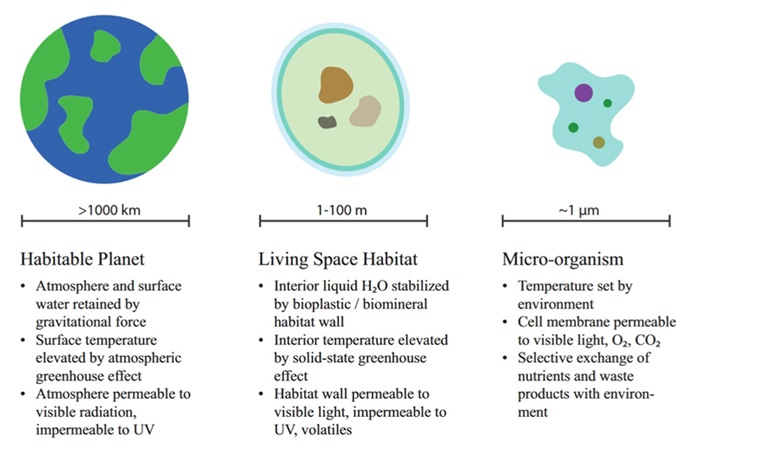 I admire the broad scope of this analysis, mentiong terraforming, genetic engineering, and silicon-based life, for example. But I especially appreciate the focus on life-as-we-know-it and its underrateded survival capabilities. For one, Arctic algae under ice grow with sunlight 1,000 times dimmer than sunlight reaching Jupiter. This fact makes it easier to accept the finding of fossilized diatoms and cyanobacteria —photosynthesizers— in meteorites from well beyond Jupiter. Frequently, the study opens neglected topics with fresh, quantitative analysis. Neglected here is any reference to Hoyle and Wickramasinghe, although the article provides strong support for panspermia. Overall, it's a useful primer on the general subject of life's potential in the univese.
I admire the broad scope of this analysis, mentiong terraforming, genetic engineering, and silicon-based life, for example. But I especially appreciate the focus on life-as-we-know-it and its underrateded survival capabilities. For one, Arctic algae under ice grow with sunlight 1,000 times dimmer than sunlight reaching Jupiter. This fact makes it easier to accept the finding of fossilized diatoms and cyanobacteria —photosynthesizers— in meteorites from well beyond Jupiter. Frequently, the study opens neglected topics with fresh, quantitative analysis. Neglected here is any reference to Hoyle and Wickramasinghe, although the article provides strong support for panspermia. Overall, it's a useful primer on the general subject of life's potential in the univese.
 Thanks for
the full article and a live link, coauthor Robin Wordsworth. Thanks for
the full article and a live link, coauthor Robin Wordsworth.
 "Does Life Really Need Planets?...," commentary by Evan Gough, Universe Today, 11 Dec 2024. "Does Life Really Need Planets?...," commentary by Evan Gough, Universe Today, 11 Dec 2024.
 Bacteria: The Space Colonists has related thoughts and links. Bacteria: The Space Colonists has related thoughts and links.
 11 Jan 2013: A carbonaceous meteorite ...contains fossilized diatoms. 11 Jan 2013: A carbonaceous meteorite ...contains fossilized diatoms.
 A new examination... is one of many postings, with links, about fossilized microbes in meteorites. A new examination... is one of many postings, with links, about fossilized microbes in meteorites.
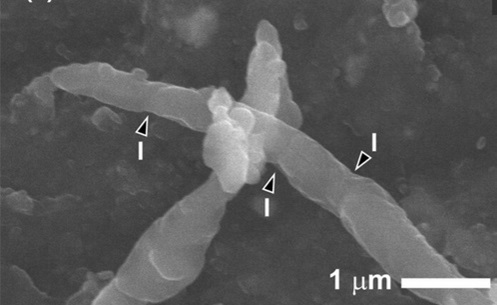 Samples of asteroid Ryugu were observed to contain growing bacteria, "even under strict contamination control." But the team from Imperial College London conducting the examination concluded, "Population statistics indicate that the microorganisms originated from terrestrial contamination." The subject will remain open, I hope. Stay tuned.
Samples of asteroid Ryugu were observed to contain growing bacteria, "even under strict contamination control." But the team from Imperial College London conducting the examination concluded, "Population statistics indicate that the microorganisms originated from terrestrial contamination." The subject will remain open, I hope. Stay tuned.
 "Rapid colonization of a space-returned Ryugu sample by terrestrial microorganisms," by Matthew J. Genge et al, doi:10.1111/maps.14288, Meteoritics & Planetary Science, 13 Nov 2024; and commentary: "Rapid colonization of a space-returned Ryugu sample by terrestrial microorganisms," by Matthew J. Genge et al, doi:10.1111/maps.14288, Meteoritics & Planetary Science, 13 Nov 2024; and commentary:
 "Ryugu asteroid sample rapidly colonized by terrestrial life despite strict contamination control," by Justin Jackson, Phys.Org, 22 Nov 2024. "Ryugu asteroid sample rapidly colonized by terrestrial life despite strict contamination control," by Justin Jackson, Phys.Org, 22 Nov 2024.
 24 Feb 2023: background about Ryugu. 24 Feb 2023: background about Ryugu.
Postscript: I just don't get it. For decades, scientists have found fossilized germs in meteorites. This supports panspermia, the theory that germs from space seeded life on Earth. But meteorites that fall to Earth may get contaminated before they are recovered, or by unsterile handling. There are tests to detect contamination, but samples returned from space, carefully quarantined, could bypass that issue and provide definitive evidence. No disagreement there.
Now, such samples have been tested. A fragment of the asteroid Ryugu, carefully quarantined, was seen to contain living bacteria. Yet the examining team decides that the bacteria must be earthly contaminants. The growth curve looks like what earthly bacteria would produce, so, ...earthly bacteria must have produced it! Huh? "The presence of microorganisms within space-returned samples, even those subject to stringent contamination controls is, therefore, not necessarily evidence of an extraterrestrial origin," the article concludes.
The conclusion is nonsense. The presence of living bacteria in a quarantined sample from space is definitely evidence in favor of panspermia. The opportunity for contamination was low, if not absolutely zero. If living bacteria were observed, the burden of proof is transferred to the skeptics. Informed comments are invited.
 Comet Rendezvous includes updates about Ryugu. Comet Rendezvous includes updates about Ryugu.
Postscript 2: On further consideration, I have many doubts about this article. The photos alone are not really adequate for recognizing bacteria. No DNA sequencing was done. The EDS could not detect nitrogen in the bacteria, although bacteria definitely contain nitrogen. No member of the team was a microbiologist.
Postscript 3: Apparently, they really found viable bacteria. But can't Ryugu still be their source?
 "Bacteria found on a space rock turn out to be Earth-grown," Nature, 21 Nov 2024. "Bacteria found on a space rock turn out to be Earth-grown," Nature, 21 Nov 2024.
| 18 Nov 2024 |
What'sNEW about HGT


|
"When [certain] genes were reacquired in [a species of cyanobacteria], they likely brought along their regulatory elements ...that could reactivate a proper regulatory response, even after millions of years...."
 "Integration of horizontally acquired light-harvesting genes into an ancestral regulatory network in the cyanobacterium Acaryochloris marina MBIC11017," by Nikea J. Ulrich and Scott R. Miller, doi:10.1128/mbio.02423-24, Microbial Ecology, 18 Nov 2024. "Integration of horizontally acquired light-harvesting genes into an ancestral regulatory network in the cyanobacterium Acaryochloris marina MBIC11017," by Nikea J. Ulrich and Scott R. Miller, doi:10.1128/mbio.02423-24, Microbial Ecology, 18 Nov 2024.
A question often asked here is, "Where do new genes come from?" The answer is usually horizontal gene transfer. (In cosmic ancestry, HGT is always the ultimate answer.) For evolution among prokaryotes, this rule is now well-observed and accepted.
 10 Mar 2021: New genes can be acquired only via HGT, with links and updates. 10 Mar 2021: New genes can be acquired only via HGT, with links and updates.
But even with a source for new genes, robust software management is needed to accept the transferred programming into the acquiring genome. The new article in Microbial Ecology shows that elements of the proper gene regulatory network (GRN) can come with the transferred software. This would surely facilitate the installation.
 Robust Software Management [incomplete] states the case for such a system. Robust Software Management [incomplete] states the case for such a system.
These observations suggest that the genetic programs responsible for embryonic development were already present before the emergence of animal life, or that C. perkinsii evolved independently to develop similar processes. In other words, nature would therefore have possessed the genetic tools to "create eggs" long before it "invented chickens."
 "Ancient unicellular organism indicates embryonic development might have existed prior to animals' evolution," University of Geneva via Phys.Org, 06 Nov 2024; re: "Ancient unicellular organism indicates embryonic development might have existed prior to animals' evolution," University of Geneva via Phys.Org, 06 Nov 2024; re:
 "A multicellular developmental program in a close animal relative," by Olivetta, M., Bhickta, C., Chiaruttini, N. et al, doi:10.1038/s41586-024-08115-3, Nature, 06 Nov 2024.
Observations of genetic programs that appear to exist before they are needed have become too numerous to count. Animal embryonic development provides another likely example. Genes that come first completely confound the mainstream theory of evolution. In cosmic ancestry, they are expected. "A multicellular developmental program in a close animal relative," by Olivetta, M., Bhickta, C., Chiaruttini, N. et al, doi:10.1038/s41586-024-08115-3, Nature, 06 Nov 2024.
Observations of genetic programs that appear to exist before they are needed have become too numerous to count. Animal embryonic development provides another likely example. Genes that come first completely confound the mainstream theory of evolution. In cosmic ancestry, they are expected.
 Metazoan Genes Older Than Metazoa? and Metazoan Genes Older Than Metazoa? and
 Genes Older Than Earth? have many more examples. Genes Older Than Earth? have many more examples.
Plumeworld is a new term to me. It refers to a stratified global ocean that apparently developed after the rapid melting, c. 635 million years ago, of the ice covering the "Snowball Earth." New research comparing lithium isotope ratios in carbonate rocks that formed during the transition has strengthened the case for a plumeworld ocean.
 The studied rocks are found in a geographic stratum, now well inland in China, that was formed offshore at the time of the melting. The analysis is impressive, and the environmental shift it covers is even more impressive. "Over a mere 10 million years, average global temperatures swung from minus 50 to 120 degrees Fahrenheit."
The studied rocks are found in a geographic stratum, now well inland in China, that was formed offshore at the time of the melting. The analysis is impressive, and the environmental shift it covers is even more impressive. "Over a mere 10 million years, average global temperatures swung from minus 50 to 120 degrees Fahrenheit."
 "Earth underwent a massive, rapid melting period after the last global ice age, new study suggests," Virginia Tech via Phys.Org, 05 Nov 2024; re: "Earth underwent a massive, rapid melting period after the last global ice age, new study suggests," Virginia Tech via Phys.Org, 05 Nov 2024; re:
 "Lithium isotope evidence for a plumeworld ocean in the aftermath of the Marinoan snowball Earth," by Tian Gan et al, doi:10.1073/pnas.2407419121, PNAS, 05 Nov 2024. (The figure has been adapted.)
A different study conducted in Colorado corroborates a global ice age ending c. 635 Ma. "Lithium isotope evidence for a plumeworld ocean in the aftermath of the Marinoan snowball Earth," by Tian Gan et al, doi:10.1073/pnas.2407419121, PNAS, 05 Nov 2024. (The figure has been adapted.)
A different study conducted in Colorado corroborates a global ice age ending c. 635 Ma.
 "Was 'Snowball Earth' a global event? New study delivers best proof yet," University of Colorado at Boulder via Phys.Org, 11 Nov 2024; re: "Was 'Snowball Earth' a global event? New study delivers best proof yet," University of Colorado at Boulder via Phys.Org, 11 Nov 2024; re:
 "Hematite U-Pb dating of Snowball Earth meltwater events," by Liam Courtney-Davies et al, doi:10.1073/pnas.241075912, PNAS, 11 Nov 2024. "Hematite U-Pb dating of Snowball Earth meltwater events," by Liam Courtney-Davies et al, doi:10.1073/pnas.241075912, PNAS, 11 Nov 2024.
 Gaia discusses global processes that stabilize (or destabilize) the environment. Gaia discusses global processes that stabilize (or destabilize) the environment.
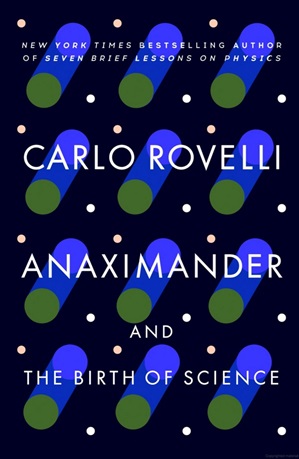 Anaximander, the pre-socratic Greek philosopher, was the inventor of science, according to Carlo Rovelli, a physicist and science writer. Born in Miletus in 610 BCE, Anaximander was a disciple of Thales, who thought all things are made or water. Anaximander went further, saying, "Rainwater is water from the sea and rivers that evaporates because of the Sun's heat." This was new because it did not require the agency of the gods. It was consistent with his principle of "necessity," which I understand as cause-and-effect. He thought that Earth was a finite body floating freely in space, and, "The Earth was originally covered in water, which slowly dried up." He thought all animals evolved from fishlike creatures. Rovelli says he was the first thinker to write in prose, not verse, and he drew the first map of the [Mediterranean] world.
Anaximander, the pre-socratic Greek philosopher, was the inventor of science, according to Carlo Rovelli, a physicist and science writer. Born in Miletus in 610 BCE, Anaximander was a disciple of Thales, who thought all things are made or water. Anaximander went further, saying, "Rainwater is water from the sea and rivers that evaporates because of the Sun's heat." This was new because it did not require the agency of the gods. It was consistent with his principle of "necessity," which I understand as cause-and-effect. He thought that Earth was a finite body floating freely in space, and, "The Earth was originally covered in water, which slowly dried up." He thought all animals evolved from fishlike creatures. Rovelli says he was the first thinker to write in prose, not verse, and he drew the first map of the [Mediterranean] world.
Rovelli's history of science, ranging from Pythagoras and Parmenides to Schrödinger and Einstein, is affirming, but slightly too optimistic for me. (Occasionally, theories need discarding.) With wide scholarship, he believes that science can prosper without religion, and he speculates about the origin and pervasiveness of religion. Overall, it's a very readable review of the history of western scientific thought. I especially enjoy the boldness and clairvoyance of some early scientists.
 Anaximander and the Birth of Science, by Carlo Rovelli, Penguin Random House, 28 Feb 2023. Anaximander and the Birth of Science, by Carlo Rovelli, Penguin Random House, 28 Feb 2023.
 What Difference Does It Make? acknowledges 20th century nihilism and suggests a genetic basis for religion. What Difference Does It Make? acknowledges 20th century nihilism and suggests a genetic basis for religion.
There is 'essentially a bottomless pit' of viruses to discover — Artem Babaian, computational virologist, U. Toronto
 "AI scans RNA 'dark matter' and uncovers 70,000 new viruses," by Smriti Mallapaty, Nature, 11 Oct 2024. "AI scans RNA 'dark matter' and uncovers 70,000 new viruses," by Smriti Mallapaty, Nature, 11 Oct 2024.
Chandra Wickramasinghe thinks cultural prejudice has prevented open consideration of panspermia. Otherwise, its strong supporting evidence would have entitled it to a more prominent place in our textbooks. In a 9-page paper, he reminds us that panspermia and other profound new ideas have histories of neglect or even prejudicial exclusion.
 "Panspermia versus Abiogenesis: A Clash of Cultures," by Chandra Wickramasinghe, doi:10.31275/20222199, Journal of Scientific Exploration [local pdf], 22 May 2022. "Panspermia versus Abiogenesis: A Clash of Cultures," by Chandra Wickramasinghe, doi:10.31275/20222199, Journal of Scientific Exploration [local pdf], 22 May 2022.
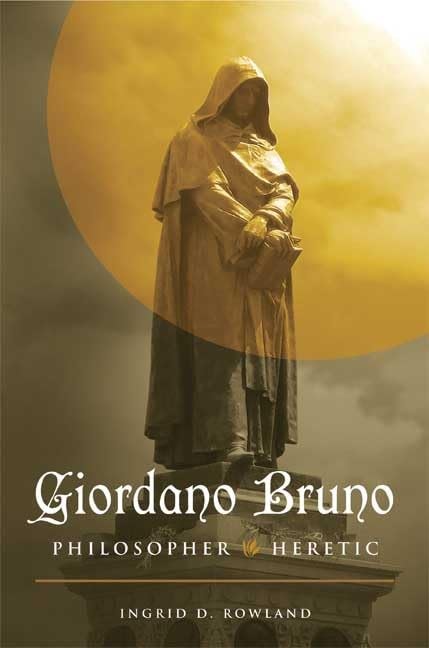
Giordano Bruno by Ingred D. Rowland reminds us that active opposition to unorthodox scientific ideas is not new. With excellent scholarship and fluent translation, Rowland tells the story of this brilliant, difficult, defrocked monk. Born in 1548, educated in Naples, he perfected a system of memorizing that amazed aristocrats and bishops. He lectured and turored in philosophy, science and theology, not omitting his own radical ideas — which got him in trouble with the catholic church. Facing excommunication, he absconded to Paris, Oxford, and various cities in Germany, seldom staying very long. Ultimately he was arrested for heresy in Padua and brought to Rome for trial. He would not abjure his beliefs, such as that God will forgive all sinners, so he was condemned and burned alive in 1600. Rowland's biography is thoroughly researched, engaging, edifying, lyrical, and highly recommended.
Among Bruno's unorthodox tenets was that the universe is infinite and contains countless inhabited worlds. He thought that anything less would diminish the grandeur of God. Supporting evidence was sparse, but the basic cosmology, with a spherical Earth orbiting the sun, was at least as old as Aristarchus. Bruno used thought experiments to ask, for example, how could the entire sky rotate around our little world? Soon after he was gone, Galilleo saw that Jupiter had four moons, and the case for other worlds became much stronger. Interestingly, Kepler thought that Bruno's speculations were more inspired than Galileo's observations. And Galileo, acutely aware of Bruno's fate, did abjure his own beliefs.
 Giordano Bruno: Philosopher / Heretic, by Ingred D. Rowland, Farrar, Straus and Giroux, 19 Aug 2008. Giordano Bruno: Philosopher / Heretic, by Ingred D. Rowland, Farrar, Straus and Giroux, 19 Aug 2008.
 Thanks for the book, Genevieve Christy. Thanks for the book, Genevieve Christy.
| 10 Oct 2024 |
What'sNEW about HGT


|
Horizontal gene transfer (HGT) is an important source of novelty in eukaryotic genomes. (This admission has taken too long.) ...bacterial HGTs ...may contribute to the striking evolutionary success of diatoms.
 "Phylogenomic fingerprinting of tempo and functions of horizontal gene transfer within ochrophytes," by Richard G. Dorrell et al, 10.1073/pnas.2009974118, PNAS, 08 Jan 2021; and commentary: Institut Curie, 25 Jan 2021. "Phylogenomic fingerprinting of tempo and functions of horizontal gene transfer within ochrophytes," by Richard G. Dorrell et al, 10.1073/pnas.2009974118, PNAS, 08 Jan 2021; and commentary: Institut Curie, 25 Jan 2021.
 Viruses... has lots about HGT. Viruses... has lots about HGT.
Micro-RNAs are seen to play a role in gene regulation, even in the human genome. This has potentially huge implications for medicine. Two genomicists who first observed them are now awarded Nobel prizes. Their research is one example of the growth and far reach of genomics. Genomicists may observe new types of genetic operators and learn what roles they play. They may also see which sequences are "new," and infer where they came from and when they were installed. But in my observation, neo-darwinism offers no guidance or insight, and is most often surprised by the discoveries.
 "Discovery in Tiny Worm Leads to Nobel Prize in Physiology or Medicine...," The New York Times, 07 Oct 2024. "Discovery in Tiny Worm Leads to Nobel Prize in Physiology or Medicine...," The New York Times, 07 Oct 2024.
 "'Out of the blue' discovery of RNAs that regulate genes wins Nobel," Science, 07 Oct 2024. "'Out of the blue' discovery of RNAs that regulate genes wins Nobel," Science, 07 Oct 2024.
 "Medicine Nobel awarded for gene-regulating 'microRNAs'," Nature, 07 Oct 2024. "Medicine Nobel awarded for gene-regulating 'microRNAs'," Nature, 07 Oct 2024.
 "Cell papers on discovery of microRNA recognized by 2024 Nobel Prize...," Cell, 08 Oct 2024. "Cell papers on discovery of microRNA recognized by 2024 Nobel Prize...," Cell, 08 Oct 2024.
 Robust Software Management lists some of life's features that dumbfound today's theory of evolution. Robust Software Management lists some of life's features that dumbfound today's theory of evolution.
 06 Jan 2017: Gary Ruvkun, one of the new Nobelists, also has thoughts about panspermia and the origin-of-life. 06 Jan 2017: Gary Ruvkun, one of the new Nobelists, also has thoughts about panspermia and the origin-of-life.
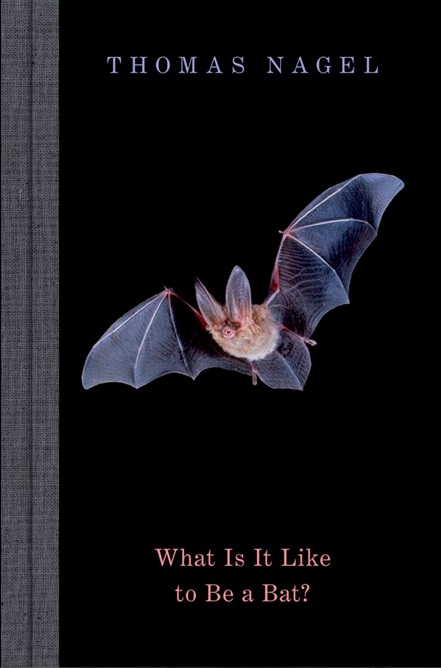 Consciousness is what makes the mind-body problem really intractable. That's how this little book of two essays begins. The first essay was published with the same title fifty years ago, and it became influential. Now, in the second essay, "Further Thoughts: The Psychophysical Nexus," Nagel enhances and restates his case for a monistic account of the apparent mind-body dualism. He suggests the two are perhaps ...inseparable aspects of some one thing, for which we do not at present have a concept....
Consciousness is what makes the mind-body problem really intractable. That's how this little book of two essays begins. The first essay was published with the same title fifty years ago, and it became influential. Now, in the second essay, "Further Thoughts: The Psychophysical Nexus," Nagel enhances and restates his case for a monistic account of the apparent mind-body dualism. He suggests the two are perhaps ...inseparable aspects of some one thing, for which we do not at present have a concept....
Admittedly, it's not my area. I have never understood exactly what "the problem of consciousness" is. May I innocently suggest that human consciousness is an emergent phenomenon, ultimately, of our genetic programming. This allows us to place consciousness on a separate analytical plane from that of biochemistry, without denying strict materialism. For an analogy, the programming underlying Conway's Game of Life yields a rich taxonomy of scurrying and flying screen images, yet these would be impossible to anticipate, even with complete knowledge of the (very short) program.
Actually, Nagel briefly considers this, yet he prefers a more radical view. Perhaps [conscious states] are emergent, relative to the properties of atoms or molecules. But if they are not, this view would imply that the fundamental constituents of the world, out of which everything is composed, are neither physical nor mental but something more basic. I'm too conservative for that. Still, Nagel is thought-provoking and knows his subject.
 What Is It Like to Be a Bat? by Thomas Nagel, ISBN:9780197752821, Oxford University Press, 2024. What Is It Like to Be a Bat? by Thomas Nagel, ISBN:9780197752821, Oxford University Press, 2024.
 10 Feb 2013: review of Mind and Cosmos: Why the Materialist Neo-Darwinian Conception of Nature Is Almost Certainly False by Thomas Nagel, 2012. 10 Feb 2013: review of Mind and Cosmos: Why the Materialist Neo-Darwinian Conception of Nature Is Almost Certainly False by Thomas Nagel, 2012.
 12 Apr 2023: a glimpse of Conway's Gane of Life with an example of a surprising image (click to animate). 12 Apr 2023: a glimpse of Conway's Gane of Life with an example of a surprising image (click to animate).
 "A landscape of consciousness: Toward a taxonomy of explanations and implications," by Robert Lawrence Kuhn, Progress in Biophysics and Molecular Biology, Aug 2024. Categorizes ~200 different approaches to the subject. "A landscape of consciousness: Toward a taxonomy of explanations and implications," by Robert Lawrence Kuhn, Progress in Biophysics and Molecular Biology, Aug 2024. Categorizes ~200 different approaches to the subject.
 There is certainly room for future generations to clarify the situation in inportant ways. I welcome this admssion in Quanta and Fields, a new book by physicist Sean M. Carroll. He is far more comfortable with quantum theory (QT) than the author of the book I reviewed yesterday. For example, Carroll does not much worry about the difference between observing a phenomenon, and disturbing/affecting it. But the subatomic details of QT get very deep, mathematical discussion. If you are interested and well-informed already, this book will be useful.
There is certainly room for future generations to clarify the situation in inportant ways. I welcome this admssion in Quanta and Fields, a new book by physicist Sean M. Carroll. He is far more comfortable with quantum theory (QT) than the author of the book I reviewed yesterday. For example, Carroll does not much worry about the difference between observing a phenomenon, and disturbing/affecting it. But the subatomic details of QT get very deep, mathematical discussion. If you are interested and well-informed already, this book will be useful.
Both books acknowledge that QT is incomplete. Whereas Kay thinks the underlying philosophy is entirely nonsensical, Carroll only admits that QT is puzzling. But, as he amply demonstrates, it works! (The theory of evolution has the opposite crisis. The underlying philosophy — neo-darwinian mutation and selection — is clear enough, but it doesn't work!)
 Quanta and Fields: The Biggest Ideas in the Universe by Sean M. Carroll, Penguin Random House, 01 May 2024. Quanta and Fields: The Biggest Ideas in the Universe by Sean M. Carroll, Penguin Random House, 01 May 2024.
 Testing Darwinism... explains that the theory of evolution does not pass basic tests. Testing Darwinism... explains that the theory of evolution does not pass basic tests.
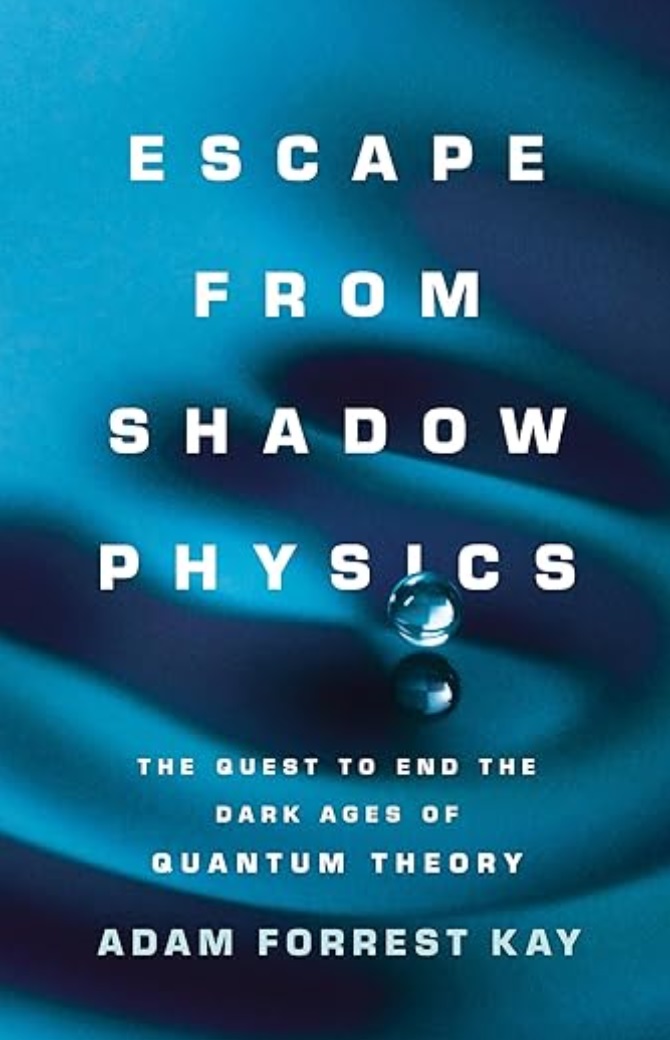 Quantum Theory has been a secondary preoccupation of mine since I was in college. I have never been satisfied with the prevailing Copenhagen interpretation — and neither has Adam Forrest Kay. His new book forcefully explains why dissatisfaction is warranted, with a thorough history of how the subject developed, and how it took a very wrong and lasting turn. I was surprised to realize that there was murkiness under the science I learned in high school. I originally thought that spin parity could be explained without entanglement. Ultimately I learned that Bell's inequality proves that local hidden variables cannot be the solution. (On this point Kay thinks otherwise, I believe.)
Quantum Theory has been a secondary preoccupation of mine since I was in college. I have never been satisfied with the prevailing Copenhagen interpretation — and neither has Adam Forrest Kay. His new book forcefully explains why dissatisfaction is warranted, with a thorough history of how the subject developed, and how it took a very wrong and lasting turn. I was surprised to realize that there was murkiness under the science I learned in high school. I originally thought that spin parity could be explained without entanglement. Ultimately I learned that Bell's inequality proves that local hidden variables cannot be the solution. (On this point Kay thinks otherwise, I believe.)
Kay advocates a speculative research avenue to restore clarity and logic to the subject. He starts by noticing another medium that also exhibits both wave and particle phenomena simultaneously, called hydrodynamic quantum analogues (HQA). It would be a return to the "pilot-wave" theory of DeBroglie and Bohm. I entrely support imaginative exploration of this sort, but I did not carefully follow his endorsement of this model. It reminded me of an analogy with gears and vortices of James Clak Maxwell's, when he was a student. For quantum theory, I suspect that the historical success of both wave and particle physics may have blinded us to an underlying physical reality that requires radically new concepts and vocabulary.
For history of quantum theory, Kay is excellent. He also digresses to other subjects where science went wrong, such as the phlogiston theory, where he writes, "Because fake problems are hard to solve, the way out is to drop them." I thought immedately of today's theory of evolution, where the hardest questions — how did this or that genetic program originate? — apparently have been dropped.
 Escape from Shadow Physics: The Quest to End the Dark Ages of Quantum Theory by Adam Forrest Kay, 423 pages, ISBN:1399609599, Basic Books, 18 Jun 2024. Escape from Shadow Physics: The Quest to End the Dark Ages of Quantum Theory by Adam Forrest Kay, 423 pages, ISBN:1399609599, Basic Books, 18 Jun 2024.
 Robust Software Management lists examples of genetic programs that look unaccountable. Robust Software Management lists examples of genetic programs that look unaccountable.
![]()
|
 Acquiring specific, heritable immunity from viral genes is a known phenomenon, but now a team of biologists at UC Berkeley have demonstated the process by transferring an immunity-conferring phage gene into fruitflies.
Acquiring specific, heritable immunity from viral genes is a known phenomenon, but now a team of biologists at UC Berkeley have demonstated the process by transferring an immunity-conferring phage gene into fruitflies.
 Yesterday I reviewed a new biography of Henri Bergson. Now I am reading Creative Evolution, his most famous work, published in 1907. I should have known that he, a dstinguished and honored philosopher, would be entirely up-to-date on the subject of Evolution. (The book took him years to research but only a few months to write, Herring's biography says.) Bergson accepts the long history of life's progress, but makes a methodical case against the neo-Darwinian (and neo-Lamarckian) accounts for the processes that produce it. For example, he notices that "adaptation" is used in two different ways, leading to error. He especially scrutinizes convergent evolution and the evolution of the eye. His arguments are penetrating and still seem valid to me.
Yesterday I reviewed a new biography of Henri Bergson. Now I am reading Creative Evolution, his most famous work, published in 1907. I should have known that he, a dstinguished and honored philosopher, would be entirely up-to-date on the subject of Evolution. (The book took him years to research but only a few months to write, Herring's biography says.) Bergson accepts the long history of life's progress, but makes a methodical case against the neo-Darwinian (and neo-Lamarckian) accounts for the processes that produce it. For example, he notices that "adaptation" is used in two different ways, leading to error. He especially scrutinizes convergent evolution and the evolution of the eye. His arguments are penetrating and still seem valid to me.
 I have long known of the French the philosopher Henri Bergson (1859-1941). I vaguely understood that his philosophy was a reaction to the strict materialism of science and the nihilism that came with the theory of evolution. I knew that Bergson's influence, while very strong in his day, was not lasting. But I thought that his famous principle, élan vital, might point to hidden truth – something special about life.
I have long known of the French the philosopher Henri Bergson (1859-1941). I vaguely understood that his philosophy was a reaction to the strict materialism of science and the nihilism that came with the theory of evolution. I knew that Bergson's influence, while very strong in his day, was not lasting. But I thought that his famous principle, élan vital, might point to hidden truth – something special about life.

 I admire the broad scope of this analysis, mentiong terraforming, genetic engineering, and silicon-based life, for example. But I especially appreciate the focus on life-as-we-know-it and its underrateded survival capabilities. For one, Arctic algae under ice grow with sunlight 1,000 times dimmer than sunlight reaching Jupiter. This fact makes it easier to accept the finding of fossilized diatoms and cyanobacteria —photosynthesizers— in meteorites from well beyond Jupiter. Frequently, the study opens neglected topics with fresh, quantitative analysis. Neglected here is any reference to Hoyle and Wickramasinghe, although the article provides strong support for panspermia. Overall, it's a useful primer on the general subject of life's potential in the univese.
I admire the broad scope of this analysis, mentiong terraforming, genetic engineering, and silicon-based life, for example. But I especially appreciate the focus on life-as-we-know-it and its underrateded survival capabilities. For one, Arctic algae under ice grow with sunlight 1,000 times dimmer than sunlight reaching Jupiter. This fact makes it easier to accept the finding of fossilized diatoms and cyanobacteria —photosynthesizers— in meteorites from well beyond Jupiter. Frequently, the study opens neglected topics with fresh, quantitative analysis. Neglected here is any reference to Hoyle and Wickramasinghe, although the article provides strong support for panspermia. Overall, it's a useful primer on the general subject of life's potential in the univese.
 Samples of asteroid Ryugu were observed to contain growing bacteria, "even under strict contamination control." But the team from Imperial College London conducting the examination concluded, "Population statistics indicate that the microorganisms originated from terrestrial contamination." The subject will remain open, I hope. Stay tuned.
Samples of asteroid Ryugu were observed to contain growing bacteria, "even under strict contamination control." But the team from Imperial College London conducting the examination concluded, "Population statistics indicate that the microorganisms originated from terrestrial contamination." The subject will remain open, I hope. Stay tuned.
 The studied rocks are found in a geographic stratum, now well inland in China, that was formed offshore at the time of the melting. The analysis is impressive, and the environmental shift it covers is even more impressive. "Over a mere 10 million years, average global temperatures swung from minus 50 to 120 degrees Fahrenheit."
The studied rocks are found in a geographic stratum, now well inland in China, that was formed offshore at the time of the melting. The analysis is impressive, and the environmental shift it covers is even more impressive. "Over a mere 10 million years, average global temperatures swung from minus 50 to 120 degrees Fahrenheit."
 Anaximander, the pre-socratic Greek philosopher, was the inventor of science, according to Carlo Rovelli, a physicist and science writer. Born in Miletus in 610 BCE, Anaximander was a disciple of Thales, who thought all things are made or water. Anaximander went further, saying, "Rainwater is water from the sea and rivers that evaporates because of the Sun's heat." This was new because it did not require the agency of the gods. It was consistent with his principle of "necessity," which I understand as cause-and-effect. He thought that Earth was a finite body floating freely in space, and, "The Earth was originally covered in water, which slowly dried up." He thought all animals evolved from fishlike creatures. Rovelli says he was the first thinker to write in prose, not verse, and he drew the first map of the [Mediterranean] world.
Anaximander, the pre-socratic Greek philosopher, was the inventor of science, according to Carlo Rovelli, a physicist and science writer. Born in Miletus in 610 BCE, Anaximander was a disciple of Thales, who thought all things are made or water. Anaximander went further, saying, "Rainwater is water from the sea and rivers that evaporates because of the Sun's heat." This was new because it did not require the agency of the gods. It was consistent with his principle of "necessity," which I understand as cause-and-effect. He thought that Earth was a finite body floating freely in space, and, "The Earth was originally covered in water, which slowly dried up." He thought all animals evolved from fishlike creatures. Rovelli says he was the first thinker to write in prose, not verse, and he drew the first map of the [Mediterranean] world.

 Consciousness is what makes the mind-body problem really intractable. That's how this little book of two essays begins. The first essay was published with the same title fifty years ago, and it became influential. Now, in the second essay, "Further Thoughts: The Psychophysical Nexus," Nagel enhances and restates his case for a monistic account of the apparent mind-body dualism. He suggests the two are perhaps ...inseparable aspects of some one thing, for which we do not at present have a concept....
Consciousness is what makes the mind-body problem really intractable. That's how this little book of two essays begins. The first essay was published with the same title fifty years ago, and it became influential. Now, in the second essay, "Further Thoughts: The Psychophysical Nexus," Nagel enhances and restates his case for a monistic account of the apparent mind-body dualism. He suggests the two are perhaps ...inseparable aspects of some one thing, for which we do not at present have a concept....
 There is certainly room for future generations to clarify the situation in inportant ways. I welcome this admssion in Quanta and Fields, a new book by physicist Sean M. Carroll. He is far more comfortable with quantum theory (QT) than the author of the book I reviewed yesterday. For example, Carroll does not much worry about the difference between observing a phenomenon, and disturbing/affecting it. But the subatomic details of QT get very deep, mathematical discussion. If you are interested and well-informed already, this book will be useful.
There is certainly room for future generations to clarify the situation in inportant ways. I welcome this admssion in Quanta and Fields, a new book by physicist Sean M. Carroll. He is far more comfortable with quantum theory (QT) than the author of the book I reviewed yesterday. For example, Carroll does not much worry about the difference between observing a phenomenon, and disturbing/affecting it. But the subatomic details of QT get very deep, mathematical discussion. If you are interested and well-informed already, this book will be useful.
 Quantum Theory has been a secondary preoccupation of mine since I was in college. I have never been satisfied with the prevailing Copenhagen interpretation — and neither has Adam Forrest Kay. His new book forcefully explains why dissatisfaction is warranted, with a thorough history of how the subject developed, and how it took a very wrong and lasting turn. I was surprised to realize that there was murkiness under the science I learned in high school. I originally thought that spin parity could be explained without entanglement. Ultimately I learned that Bell's inequality proves that local hidden variables cannot be the solution. (On this point Kay thinks otherwise, I believe.)
Quantum Theory has been a secondary preoccupation of mine since I was in college. I have never been satisfied with the prevailing Copenhagen interpretation — and neither has Adam Forrest Kay. His new book forcefully explains why dissatisfaction is warranted, with a thorough history of how the subject developed, and how it took a very wrong and lasting turn. I was surprised to realize that there was murkiness under the science I learned in high school. I originally thought that spin parity could be explained without entanglement. Ultimately I learned that Bell's inequality proves that local hidden variables cannot be the solution. (On this point Kay thinks otherwise, I believe.)